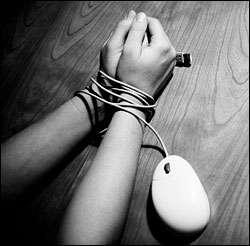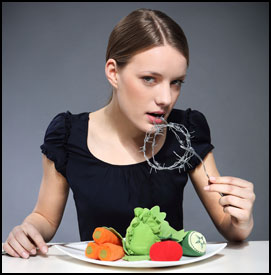Teen Suicide, Teen Violence, Cyberbullying (Online Bullying), Internet & Online Addiction, Eating Disorders & Anorexia, Teen Hookups, Substance Abuse, Video Games, Teen's Watching Porn, Teen's Watching TV Violence, Teenagers Exposed to Violence at Home, and Violent Culture
Facts, Ideas, Ways to Respond, Prevention, and Potential Interventions regarding Teen Issues
By Ofer Zur, Ph.D.
Table Of Contents
Teen Suicide
Cyberbullying & Bullying at School
Internet & Online Addiction
Teens & Sex: The Hookup Culture
Teens & Substance Abuse
Teens & Cannabis
Teens & Opioids
This page addresses some of the most important issues facing our teenagers at this time. These include teen suicide, teen violence, cyberbullying (online bullying), Internet & online addiction, teens and sex, teens and substance abuse, teen anorexia and eating disorders, violent video games, teans watching porn, TV violence, violence at home, & violent culture. Parents, teachers and communities across the country are concerned with teen issues, which are caused by a number of social, cultural, technological, communal, economic, familial, and individual factors. While it may be hard to change the nature of the Internet, computers, cell phones and TV, there is always something that each one of us can do to reduce teen violence, the rate of teen suicide, teen cyber-bullying, bullying at school, and help develop a well-adjusted relationship to our technological and commercialized culture, and a creative and balanced use of the Internet, Online Gaming, etc. Following is information about the underlying forces behind these teen issues, as well as actions that parents, teachers and each one of us can take to address them.
~ ~ Teen Suicide ~ ~

Facts:
- According to the Centers for Disease Control and Prevention (CDC) WISQARS Leading Causes of Death Reports, in 2017:
- Suicide was the tenth leading cause of death overall in the United States, claiming the lives of over 47,000 people.
- Teens in rural areas are at the greatest risk: suicide rates in rural counties are 80% higher than in metropolitan areas
- Suicide was the second leading cause of death among individuals between the ages of 10 and 34, and the fourth leading cause of death among individuals between the ages of 35 and 54.
- There were more than twice as many suicides (47,173) in the United States as there were homicides (19,510).
- Teen suicide is the second leading cause of death for people between the ages of 10-34.
- Young males are much more likely to commit suicide than their female peers, but female adolescents are more likely to attempt suicide than their male peers.
- Some of the risk factors for teen suicide are:
- History of previous suicide attempts
- Family history of suicide
- History of depression, anxiety, or other mental illness
- Alcohol or drug abuse
- Stressful life events or losses
- Easy access to lethal methods
- Exposure to the suicidal behavior of others
In summary:
Teen suicide is a significant problem in our culture. BUT there are effective means to preventing it.
Myths And Faulty Beliefs About Suicidal Teens:
- Once a teenager decides to commit suicide, nothing can stop him or her.
- Asking teens if they are thinking about killing themselves may give the idea of suicide.
- Teens talk about suicide mostly to get attention, therefore the best thing to do is to ignore the teenager.
What You Can Do:
- If an adolescent says "I want to kill myself" or "I'm going to commit suicide," always take the statement seriously and immediately seek assistance from a qualified mental health professional.
- Find out if the teen has suicide ideation (thoughts), a plan, and means and if so, what it entails.
- The more specific the plan, the higher the degree of risk for the teenager. Take it seriously and seek help.
- Tell the teenager that you will do whatever you can to prevent them from committing suicide.
- Remove or securely lock guns, pills, medications and other potential lethal means and make them out of reach of the teen.
- The "No Suicide contract" intervention is controversial. See article The Case Against No-Suicide Contracts: The Commitment to Treatment Statement as a Practice Alternative.
- If you are feeling suicidal, thinking about hurting yourself, or are concerned that someone you know may be in danger of hurting him or herself, call 911 or the National Suicide Prevention Lifeline at 1-800-273-TALK (1-800-273-8255).
What You Should NOT Do:
- Don't debate the merits of living or dying with an actively suicidal teen.
- Don't ask why the teenager would like to commit suicide. Suicidal teens may not know why.
- Don't belittle the teen for having suicidal thoughts.
- Don't stay passive or ignore the threat of a suicidal teenager. Seek mental health help.
- Don't leave the teen alone if you think there is immediate danger.
- Don’t offer platitudes, give false reassurances, or try to talk them out of it. Try to understand where they’re coming from and what they’re feeling.
Additional Resources
~ ~ Online Bullying (cyberbullying) & Bullying at School ~ ~

Facts:
- Bullying is an ongoing pattern of harassment and abuse.
- Bullying can have many different forms. It can be online (cyberbullying), directly in-person through physical or verbal attack,s or indirectly through exclusion, spreading rumors, etc.
- Cyberbullying or online bullying is a serious problem that is growing among pre-teens, teenagers, and college-aged students.
- Girls are more likely than boys to be cyberbullies due to the verbal (non physical) nature of online communication.
- Cyberbullying can be a more serious problem than direct in-person bullying or school bullying because the online bullies do not have a 'reality check' or feedback, as the online bully does not get to see or hear the pain or harm they inflicted on the victim. [This has also been called the online disinhibition effect.]
- It is very easy for cyberbullies to think or convince themselves they are merely "joking" because the virtual abuse does not feel "real".
- LGBTQI (lesbian, gay, bisexual, transgender, questioning and intersex) youth are particularly vulnerable to bullying both online and offline.
- Cyberbullying can lead to the suicide of those victims being bullied.
In summary:
Online bullying or cyberbullying is a widespread and fast growing phenomenon while offline bullying continues to be a problem as well. Lack of awareness and education efforts among parents, counselors, school staff, and students make cyberbullying and offline bullying a continual threat to young people's confidence and safety.
What You Can Do If Your Teenager is Bullied Online (cyber-bullying):
- Work with your child to recognize cyberbulling.
- Let your child know you support them.
- Learn ways to block cyberbullies and reduce exposure to online bullies.
- Demand that the school develop comprehensive educational programs and policies about cyberbullying.
- Cyberbullying is illegal in many states. In serious cases, seek legal advice or request protection from school officials.
What You Can Do If Your Teenager is Bullied In School or In Person:
- Teach the teen ways to walk away from or avoid the bully/s.
- Introduce your child to assertiveness training.
- Teach your child to speak up on behalf of those who are being bullied and against the bullies.
- Demand that the school develop protocol and comprehensive educational policies about bullying to keep school safe for everyone.
- If your child is LGBTQI, help them find or start a support group, such as a Gay-Straight Alliance. There is safety in numbers.
Additional Resources
~ ~ Internet Addiction & Online Gaming Addiction ~ ~
Facts:

- Younger generations such as teenagers, unlike their parents' generations, generally socialize, hang out, communicate, and share pictures and videos online rather than in person.
- These days millions of young people play Pokémon all around the world. While getting the young people out of their home and have them meet array of people and places, it also rose some security and safety concerns.
- There is a clear digital divide, and often a tension between the younger generations, AKA "Digital Natives", and the older parent generations who are often AKA "Digital Immigrants".
- Digital natives prefer to text rather than talk on the phone. They do not listen or leave voice mails, and prefer to socialize on Twitter, Facebook, or Instagram rather than on the playground or at the town square.
- Some young people, primarily teenagers, spend too much time in front of a computer screen. Some spend up to 20 hours a day, seven days a week.
- Spending countless hours a day, every day, on gaming or perusing the Internet can interfere with young people's emotional, physical, and intellectual development. However, sometimes it may be just a phase.
- Controlling the use of online devices and using parental control software is generally successful only with pre-teen children.
- Unlike young parents, older digital immigrant parents' concerns regarding the digital native's use of online technology is often rooted in misunderstanding, ignorance, and unfounded fears.
- It is important for parents to realize that when your children are online they are generally not passively watching the screen (like watching TV). They are engaged in social networking, gaming, posting videos and pictures, texting, etc.
- Trying to forcefully control teenagers' online use, such as gaming, often leads to alienation from parents and an increased teen desire to use such devices. This is the time for conversations and discussion rather than imposing ineffective and alienating rules.
- Ultimately, in their own time, most digital natives regulate themselves and find a balance between their online and offline lives.
In summary:
It is common for the digital native, especially teens and young adults to over-use technology, especially online social networking and online gaming sites. Parents and teachers should strive to understand children's affinity for technology given their status as digital natives. Young people are not "addicted" simply because they are normal "digital natives" who spend a lot of time online in comparison, especially to older "digital immigrant" parents.
What Parents Can Do:
- Learn about what the Internet means to your digital native children by engaging with them in conversation and listening to them compassionately and attentively.
- Install parental control software when children are young. When they get older nearing teenage age, most of them will find ways to circumvent the control. This is the time to move from attempts to control to conversations.
- Observe what your digital native children are engaged in online with curiosity, open eyes and an open heart.
- Explore what actual games are played, how these games are played, with whom they are played and even play with them (even if you are very bad at it).
- Learn what your children likes about the games and what the psychological allures of the games are.
- Try to agree on time limits with your child via a dialogue rather than trying to enforce your own unilateral limits.
- Help your children by having respectful conversations. Achieve balance between online and offline activities, during the week v. weekends.
- Negotiate the limits with teenager children. They are more likely to follow agreements that are set via true negotiation rather than those unilaterally imposed by parents.
What Parents Should NOT Do:
- Don't nag, label ("You're an addict!"), blame ("You're wasting your life!"), scold ("you are a loser!), prematurely threaten or demand that they must change their online behavior.
- Don't arbitrarily take the digital device from teenagers. It will only increase the alienation between you and your child.
Additional Resources
~ ~ Teens & Sex: The Hookup Culture ~ ~
Facts:
- The 21th century introduced a new and different (or intensification of) form of sexuality, the hookup culture.
- The hookup culture accepts and encourages casual sexual encounters, one-night stands and similar sexual, yet non-personal activities.
- The focus of the hookup culture is short-term physical and sexual pleasure without any emotional engagement or long-term commitment.
- The hookup culture is very common among Western high school teenagers and college students.
- Some estimate that roughly 60% to 70% of teens are involved in the hookup culture and about 20% of them lose their virginity via such non-committal sexual activities.
- More boys than girls report being engaged in casual sexual encounters, yet more girls than boys express regret or shameful feelings and are shamed by their peers for being involved in such activities.
- Many of those involved in hookup activities may find a partner to repeatedly hook up with, which is known as “friends with benefits”. Such relationships, while not formally exclusive, can last for long periods of time and can often be seen as a form of monogamy.
In summary:
The hookup culture is generally defined by its acceptance and encouragement of casual sexual encounters, ‘one-night stands', and similar non-personal sexual activities. Often this culture is far more accepting of male rather than female promiscuity. While men are often celebrated and praised for engaging in this culture, women are commonly shamed and bullied for engaging in non- personal sexual actions, representing a clear double standard. The turn of the 21st century has manifested a prevalent promiscuous hookup culture that has become popular among older teenagers and even more so among college students, girls and boys alike.
What You Can Do:
- Understand the hookup culture and its prevalence among teenagers and college children.
- Converse with your child about the pressure and expectations of the hookup culture that they may encounter in high school and college.
- Make your child aware that they have a choice as to whether they participate in casual sexual encounters or not.
- Remind your child that, not only do they have the choice about whether to participate in non-intimate casual sex but that each choice that is made has its own physiological, emotional and relational consequences.
What You May NOT Do:
- Shame your child about participating in casual hookup activities. You must understand the context and culture behind their behavior. Shaming them will only create a rift between you and your child.
Additional Resources
~ ~ Teens & Substance Abuse ~ ~
Facts:
- Most teens experiment with drugs and alcohol. Many experiment with cigarettes as well.
- Most teens that experiment with drugs and alcohol do not become addicted.
- Common reasons behind teen drug use include curiosity, developmental need for experimentation, peer pressure, stress, emotional issues, and a desire to escape.
- In recent years, according to several resources, teens' use of alcohol, cigarettes, illicit drugs, synthetic drugs, and prescription drugs has decreased.
- There has been little to no increase in the use of marijuana among teens.
In summary:
Conversing with your teen about his/her alcohol and drug use is the first step towards developing a safe and responsible use, or non-use of drugs. While setting limits is very important, extreme, rigid parental enforcement can result in alienation from parents and family members, which only makes the problem worse.
Myths & Faulty Beliefs About Teens' Drug Use:
- Once the adolescent starts consuming alcohol or drugs he/she will end up as an addict.
- Teens who use drugs are morally deficient.
- Using drugs is a sign of incoming criminal activity down the line.
What You Can Do:
- Converse calmly with your teen regarding his/her alcohol and drug use.
- Through quality conversation, find out what, when and where your child uses drugs and alcohol.
- Try to understand why your teen is using drugs. Some reasons may include curiosity, peer pressure, stress, emotional issues, and a desire to escape.
- Differentiate between using recreational drugs and alcohol socially, and the abuse of drugs and alcohol.
- Set reasonable limits regarding alcohol and drug use.
- Lay down reasonable consequences.
- Be extremely clear about drinking and driving. Institute a designated driver, understanding, and policy.
- Prevention programs can be done at home, school, community and other places.
- An intervention or sending a teen to rehab must be considered as a very last resort.
What You May NOT Do:
- Get involved in shouting matches and overly heated arguments with your child around the issue of their drug/alcohol use.
- Set forth too strict and unreasonable limits on drug or alcohol use.
- Lay down unreasonable or overly punitive consequences.
- Alienate yourself from your child due to your response to their drug/alcohol use
- Send the child pre-maturely to drug rehab or mandated rehab program.
Additional Resources
~ ~ Teens & Cannabis ~ ~
Facts:
- Although we have come a long way from the hysterical “reefer madness” days, there is considerable evidence that cannabis is not the completely harmless, benign drug it has been popularized as in recent decades. The truth about marijuana’s effects is somewhere in the middle.
- With increasing legalization, medicalization and decriminalization, cannabis use among adolescents, after several years of flat or declining use, is likely experiencing an uptick.
- Most adolescents who use cannabis use two or more methods (eg., edibles, vaping or rolled joints).
- Regular use of cannabis has a negative effect on adolescents’ motivation, executive functioning, and driving.
- Cannabis use among adolescents rises significantly in 10th grade and continues rising through 12th grade.
In summary:
Cannabis use among teenagers has begun rising after years of declining use. Combined with the popularity of vaping and increasingly potent cannabis, its use among teenagers, whose nervous systems are still developing, should be cause for some concern.
Myths and Faulty Beliefs About Cannabis
- Cannabis is a gateway drug
- The seemingly decreased motivation of adolescent users is merely "mellowness."
- Only "troubled" teens use cannabis.
- Most teenage marijuana smokers are heavy users
What You Can Do:
- Discuss the pros and cons of cannabis use with your teenager. Listen to THEIR pros and empathically hear their reasons for using.
- It is important to always keep communication open and mutually trusting with your teenager.
What You May NOT Do:
- Avoid interrogation, threats, blame or shame.
- Scare tactics are seldom effective.
Additional Resources
- National Institute on Drug Abuse
- Health and Human Services
- "Marijuana Damages Young Brains" New York Times, June 16, 2019
~ ~ Teens & Opioids ~ ~
Facts:
- The majority of opioid use among adolescents is due to prescriptions.
- Despite the growing emphasis on the dangers of over-prescribing opioids for adults, the rate of prescribing opioids for adolescents in emergency rooms and outpatient clinics remains high.
- 7 out of 10 teens who use opioids recreationally combine those opioids with other drugs and/or alcohol, which increases the danger.
- About a quarter of teens using prescription opioids combine them with marijuana, and about 15% combine them with alcohol.
- Nearly half of adolescents ages 12 to 17 who reported misusing pain relievers said they were given or bought them from a friend or relative.
- Students who report ever using prescription drugs without a doctor’s prescription are more likely than other students to have been the victim of physical or sexual dating violence.
In summary:
Opioid use frequently begins with a legitimate prescription, whether for the teen or for someone the teenager knows. Because of the highly addictive nature of opioids and the fact that teenagers frequently combine opioids with other substances, their use should be considered highly dangerous.
Myths and Faulty Beliefs about Opioid Use:
- Opioids are safe if they are prescribed
- Opioids always remain the most effective treatment for pain
- Most opioid deaths are due to adulterated drugs
- Opioid use is closely correlated with socio-economic class
What You Can Do:
- Know the potential warning signs of opioid abuse:
- Changes in socializing habits or school performance
- Adolescents who have witnessed a family member overdose or who have friends who have misused prescription drugs
- Increased drowsiness, lethargy, depression, anxiety or euphoria
- Changes in sleep habits
- Abandonment of previous activities
- Do not encourage over-treatment of physical pain. Do not view physical pain as something to be eliminated but as something to be managed.
- Work on relating with your teenagers and understanding them. Focus on your teenager more than on the problem.
- Enlist help: your physician, a therapist. Other family members with whom your teen has had a good relationship.
What You May NOT Do:
- Do not interrogate, blame, threaten or shame
- Do not try to extract a no-use pledge from your teenager. This is more likely to lead to decreased honest and open communication between your teen and you.
Additional Resources
- Substance Abuse and Mental Health Services Administration. Referrals to crisis intervention helplines and treatment centers
- Keeping Youth Drug-Free. Downloadable free information booklet
- National Child Traumatic Stress Network
- National Institute on Drug Abuse. Information on opioid effects, use and treatment
~ ~ Eating Disorders – Anorexia & Teens ~ ~
Facts:
- Eating disorders can take a devastating toll on teens, and can even be deadly, particularly among girls.
- Some of the causes of eating disorders are:
- Social pressure from a popular culture that emphasizes unrealistic thinness, with such pressure being presented on social media, TV, movies, popular web sites, etc.
- Social pressure to diet and be thin.
- Families who overemphasize slender bodies and mock any minor sign of excess weight.
- Some athletic, ballet or competitive programs may also over emphasize thinness.
- Personal factors, such as genetics or biological factors might make some teens more vulnerable to developing eating disorders.
- Personality inclinations, such as rigidity, anxiety or perfectionism may contribute to eating disorders and/or anorexia.
- Some signs of eating disorders may include, skipping meals, excessive pre-occupation with food, constant complaining about being 'fat', constant joking and attention centered around ones food and weight, use of laxatives, expressing disgust at one's own eating habits.
In summary:
Eating disorders and Anorexia are extremely serious conditions that teenagers and particularly girls face. Such conditions must not be taken lightly, for if ignored and left untreated, such conditions can be deadly. Make sure that you, as parents, are not contributing to the problem but are actively encouraging healthy dietary habits, realistic body images and ensuring your child has access to counseling and clinics if needed.
Myths & Faulty Beliefs About Anorexia and Eating Disorders:
- No need to worry, eating disorders are normal and just a phase that many girls go through.
- Eating disorders and/or Anorexia cannot be treated.
- With enough will power, the teen can simply overcome her obsession with weight and thinness.
- Punishment can get the teen over her/his eating disorder problem.
What You Can Do:
- Encourage healthy-eating habits.
- Talk to your teen about his/her eating habits and self image.
- Stay emotionally connected with your teen in a supportive and loving way.
- Promote a healthy body image.
- Talk to your teen about his or her self-image and offer reassurance that healthy body shapes vary.
- Do not allow any hurtful nicknames or jokes to be made in the house.
- Discuss the importance of pressure from the media. Television programs, movies, magazines and social medial websites that convey the expectations of unrealistic body imagery can result in unhealthy eating habits.
- Help your child with self-esteem by respecting his/her accomplishments that are not related to body weight.
- Model to your teen your unconditional love, and show them that your love does not depend on their weight, thinness or appearance.
- Set an example with the way you treat your own body and the way you eat.
- Seek professional help. It is OK to start consulting with a mental health professional that is an expert on eating disorders.
What You May NOT Do:
- Give up on helping your teen with her/his eating disorders.
- Yell at and punish your teen. This will only make things worse.
- Shame your teen.
- Try to talk the teen out of their obsession with weight and thinness.
- Mock their behavior or use jokes or nicknames regarding their weight.
- Offer food as a bribe.
- Take away food as a punishment.
- Constantly nagging about rigid dieting and discussing issues of food and weight.
- Excessively flaunting your thin body.
Additional Resources
~ ~ Violence Online & In Video Games ~ ~
Facts:
- The gaming acts of violence are complex and do not simply equate with violence in the real world.
- Most teenagers who play violent games do not necessarily turn into violent teenagers in 'real life.'
- Some teenagers are being desensitized to violence and sexual crimes due to playing violent video games.
- Some military units and law enforcement agencies use video games to train their people in the use of firearms.
- Lt. Col. David Grossman, a U.S. Army expert on the psychology of combat and author of the book, "On Killing", has described violent video games as "murder simulators".
- There are not scientific correlations between violent video games and in person violence.
In summary:
While there are no scientific correlations between playing violent video games and in-person violence, violent video games can desensitize players to the suffering of others and can trivialize violence. There are more significant factors, such as child abuse, domestic violence or violent neighborhood that are likely to increase violent behavior. Don't violently take the video games away from your children.
What You Can Do:
- Discuss with your children and listen carefully to what they find appealing about playing violent video games.
- Do not assume that teenagers who play violent video games will turn out to be violent themselves.
- With pre-teen children, try to creatively replace violent video games with non-violent, stimulating, fun, exciting, educational, interactive and challenging educational video games.
- Teach your teenagers how to define their values, reflect on the game they are playing and discuss conscious choices regarding video games.
- Create balance between online games and offline engagement.
- Remember that most video games, violent or not, are transient, not permanent. Most kids simply move on from one game to another over time.
What You May NOT Do:
- Don't violently take the gadgets or the violent video games from your children.
Additional Resources
~ ~ Teenagers Watching Porn ~ ~
Facts:
- By the time they are teenagers, many if not most teens have had some exposure to porn.
- Following are several myths (i.e., untrue statement/beliefs) compiled by Dr. Klein regarding porn:
- Porn is mostly violent and misogynist.
- Watching porn causes erection problems.
- Porn destroys good intimate relationships.
- Most men hide their porn watching from their partner because they know they're doing something wrong.
- Only a man would enjoy porn; women simply don't like it.
- Watching adult porn leads to watching kiddie porn.
- Porn is all about men's sexuality and men's pleasure.
- Watching porn encourages violence against women.
- California's 2014 controversial AB1775 law, requires mental health professionals to report if a patient has knowingly downloaded, streamed, or even simply accessed (that is, viewed) an electronic or digital image in which anyone under 18 "is engaged in an act of obscene sexual conduct." That's any image that lacks "scientific, literary, artistic, or political" value.
In summary:
Most teenagers have been exposed to some form of porn. The challenge for parents is not how to block teenagers from watching porn, because the teens will find a way to access it, but to have quality conversations on what is pornography, what is the draw, and how it affects their teens' lives and their view of males, females and sexuality. Parents should not assume that watching pornography, even though it my be repulsive to the parents, is inherently damaging to the teens.
What You Can Do:
- Porn is an adult product. Prevent young children from watching porn by installing parental control software, placing the screen in visible place in the house, or other means.
- Find out what kind of porn your children are watching.
- Discuss with your children what they find appealing about online porn.
- Introduce the idea to your children that porn is about acting and is composed of actors and actress and is not necessarily reflect real life actions or values.
What You May NOT Do:
- Don't emotionally or violently react to your teen-age children watching porn. Your violent act can cause more damage than any porn video.
- Do not assume that watching porn is inherently damaging.
- Do not assume that porn is only for men.
Additional Resources
- Nine Absolutely Untrue Myths About Porn - And One Fact We Can All Agree On
- Internet Pornography Resources
~ ~ Violence On TV & In The Media ~ ~
Facts:
- T.V. influences behavior. If it didn't, Nike, Budweiser, Pepsi, etc. would not invest billions of dollars in advertisements.
- Violence on T.V. occurs in most programs, including the news, and is especially prevalent in cartoons.
- By age 12, the average child has witnessed tens of thousands of violent acts on T.V. and in video games.
- Hundreds of studies have concluded that T.V. violence is linked to aggressive behavior in children who extensively view violent shows. However, other factors, such as violence at home and in the neighborhood are stronger predictors of violent behavior in children.
In summary:
Violence in the media, whether it is reflected in cartoons, shows, movies or music can desensitize children to the effects of violence and may also legitimize and glorify violence. However, other factors, such as violence at home and in the neighborhood are stronger predictors of violent behavior in children.
What You Can Do:
- A young child's bedroom should be free of TV's and video game consoles, so you have control over the amount of time they spend watching TV.
- Monitor the amount of exposure children have to violent movies and TV.
- If possible don't expose pre-teens to violent content in entertainment.
- Watch age-appropriate shows together, as a family.
- Don't turn on the TV before school and turn it off well before bedtime.
- Discuss how the content of media your family encounters does or does not reflect the values of your family.
What You May NOT Do:
- Do not violently forbid or scold children who watch violent shows on TV.
- Do not ban the use of TV as it will only increase the allure of TV.
Additional Resources
~ ~ Violence At Home ~ ~

Facts:
- One of the main reasons that children and teens become violent is because they are exposed to violence in their own homes, whether it is directed towards them or towards others.
- Violence at home can be of a physical nature, or it can be expressed verbally or through emotional neglect and abandonment.
- Abusive homes and violent neighborhoods are stronger predictors of adult violent behavior than violent video games or violence in the media.
- Most abusive parents were physically or sexually abused as children.
- Passivity perpetuates abuse.
- It is a false myth that most domestic violence is perpetuated or carried on by men. Sadly enough, domestic violence is an equal opportunity crime.
In summary:
The home like the neighborhood has an immense influence on children. Violent children are most likely to come from abusive homes and/or neighborhoods.
What You Can Do:
- Do not ignore signs or evidence of child abuse or domestic violence.
- Report child abuse to Child Protective Services, local police and school counselors.
- If there is violence in your own home seek help immediately.
- Stop the cycle of violence!
- Schools, religious and community institutions can get involved in the prevention of domestic violence through education.
Additional Resources
- System Approach to Domestic Violence MP3 (Transcript)
- Domestic & Intimate Partner Violence & Female Batterers Resources
~ ~ Violent Culture ~ ~

Facts:
- There are undeniable relationships between violent environments, neighborhood violence and individual violence.
- Subtle coercion or verbal abuse in the home is likely to be experienced and observed by children as a form of violence.
- Cultures in which young children regularly receive loving touch have lower incidents of violent crimes.
In summary:
Violence in the neighborhood and in the culture at large generally correlates with individual violence.
What You Can Do:
- Teach and demonstrate peaceful conflict resolution.
- Discipline your children through non-violent means.
- Provide stories, books, movies, etc., that place a high value on treating others with tolerance and respect.
- Create a culture of respect in your home and larger community.
- Speak out against violent injustice.
- Always report incidents of abuse and violence
- Get help for the abused and the abuser. Passivity perpetuates abuse.
Additional Resources
Emergency Resource & Our Disclaimer:
This page provides only general information and general education regarding a variety of teen issues. It is neither a substitute to medical or mental health treatment nor is it a substitute for calling 911 or emergency services. If you are feeling suicidal, thinking about hurting yourself, or are concerned that someone you know may be in danger of hurting herself or himself, call 911 ASAP or the National Suicide Prevention Lifeline at 1-800-273-TALK (1-800-273-8255). This phone service is available 24 hours a day, 7 days a week and is staffed by certified crisis response professionals who may be able to direct you to a crisis center in your area anytime 24/7.